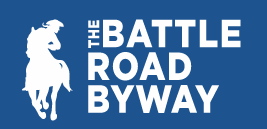 A new regional website, www.battleroadbyway.org, highlights the history and activities along the Battle Road — the path that British troops followed during the battles that started the American Revolution on April 19, 1775.
A new regional website, www.battleroadbyway.org, highlights the history and activities along the Battle Road — the path that British troops followed during the battles that started the American Revolution on April 19, 1775.
The route runs along 15 miles of roads in Arlington, Lexington, Lincoln, Concord, and the Minuteman National Historical Park, with an additional loop in Lincoln that traverses Bedford Road to Baker Bridge Road and back up Route 126 to Route 2A that highlights Lincoln’s special historical, cultural, and architectural landmarks.
The Battle Road Byway website provides an integrated overview of iconic sites and events such as Paul Revere’s ride and his capture by the British in Lincoln, the battles at Lexington Common and the Old North Bridge (“the shot heard ’round the world”), and other skirmishes between British troops and Minute Men along the route, including at Bloody Angle in Lincoln and the Jason Russell House in Arlington, where 12 colonists and two British soldiers died — the bloodiest encounter associated with any house during the Revolutionary War.
The byway’s theme is “Roads to Revolution” because it touches on other revolutionary developments that occurred along the famous route. Accordingly, the site has information on Louisa May Alcott, Ralph Waldo Emerson, Walden Pond, MIT Lincoln Laboratory, the deCordova Museum, and over 200 other points of interest.
There are pages for each of the four towns as well as on architecture, history, literature, and nature, all of which are cross-linked. Another section highlights opportunities for activities including hiking, biking, canoeing, and nature exploration.
The Battle Road Byway Committee is a joint venture by the four towns and National Park Service that partners with Freedom’s Way National Heritage Area, MassDOT, and other organizations to provide stewardship to the byway’s resources. Lincoln’s liaison is Paula Vaughn-MacKenzie, assistant director of planning and land use.
Congress is expected to vote this fall on reinstating the Federal Program for Scenic Byways. If passed, the legislation could qualify the four towns for federal money, and the committee would apply to have the route designated as a National Scenic Byway.
Last year, Director of Planning and Land Use Jennifer Burney and Town Administrator approached MassDOT with a request for pedestrian and bicycle improvements along Route 2A in Lincoln, which comprises part of the byway. The agency responded by assembling a stakeholder group with representatives from Lincoln, Lexington, Concord, Hanscom Field, Massport, Minute Man National Historical Park, and the Battle Road Byway Committee.
MassDOT and consultant Toole Design are working on concepts ideas based on site visits, discussions, and review all past studies, traffic counts, etc., Burney said. The stakeholder group will reconvene in late summer to discuss concepts ideas and solicit feedback.
The Battle Road Byway Committee will hold a public meeting on October 15 at the Minute Man National Historical Park Visitors Center from 6–8 p.m.to review what it’s done to date and invite comments as well as suggestions for future initiatives.
